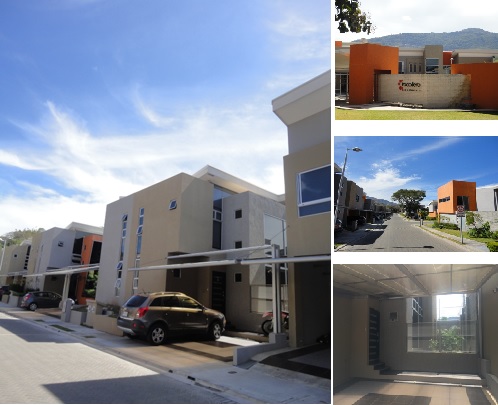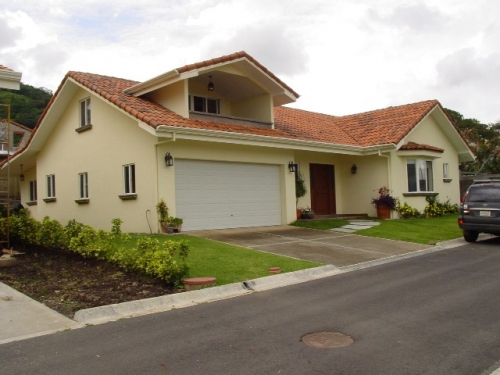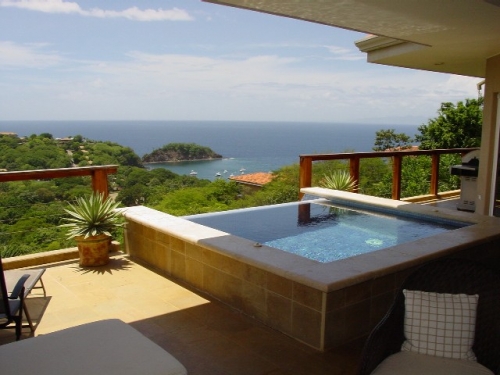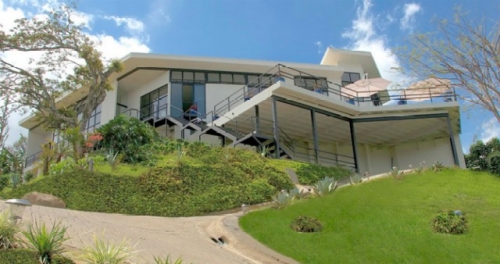Costa Rica Guide
Costa Rica Real Estate
List your property today!
Inclusion of real estate listings at Costa Rica Guide is
absolutely free of charge.
Featured Properties
Costa Rica Guide - Costa Rica Real Estate
North Pacific Region - Costa Rica Country Profile
Considered the most complete destination in Costa Rica, Guanacaste is a seductive region everyone longs to visit.
With an area of 6,933 square miles and a population of about 450,000, Guanacaste has a varied topography ranging from highlands featuring active volcanoes to pastoral, fertile lowlands. Within its boundaries are very important protected areas and a scenic Pacific shore featuring crystal blue waters lapping at warm, sandy beaches.
The lowlands
The Pan-American Highway leads visitors to Guanacaste, passing by scattered cities and villages from which several destinations can be reached. Passing the Puntarenas intersection and traveling deep along the winding road to Liberia, the landscape changes little by little to vast extensions running along both sides of the road. The eastern side is crowned by the main mountain range while the flatness of the western side promises stunning sunsets over its wide-open spaces.
Several rivers, a few of them leading to protected areas, cut across the roadway. Rafting stations offer visitors the chance to follow the current while bird watching and admiring nature. Interesting options, indeed, before getting to the beach.
Cattle haciendas, ecological lodges, ecotourist centers, and museums are options to visit along the way and learn more about Guanacaste’s lowlands. Lomas de Barbudal Biological Reserve and Palo Verde National Park are the largest protected areas in this region.
The highlands
Villages and cities scattered along both sides of the Pan American Highway lead visitors to Guancaste’s highlands. A very nice road leads to two spectacular natural sanctuaries, Tenorio Volcano National Park and its neighbor Miravalles Volcano. Don’t miss a visit to Miravalles Forest Reserve.
Beyond Liberia, Rincón de la Vieja Volcano National Park offers the dramatic experience of an area featuring an active volcano in a relative period of calm. The largest of the five volcanoes belonging to the Guanacaste Cordillera, it is composed of nine separate volcanic craters. A refuge for birds and wildlife, the slopes of the volcano are superb for horseback riding and contemplation of nature.
Perfectly designed trails allow visitors to travel along the slopes and the higher areas of the volcano with very rewarding experiences in bird watching as well as wildlife spotting. Splendid vegetation and gigantic trees, bubbling mud holes, clean cool rivers, dramatic waterfalls and river pools embrace visitors, while inviting them to relax.
Further north, Santa Rosa National Park is the largest protected area of the dry forest, an area ranging from the savanna to the slopes of Guanacaste’s volcanic range on the eastern side of the territory.
Ocean and beaches
Traditionally known as a paradise for bird watchers and nature lovers, Guanacaste is also a charming experience for those interested in relaxation and fun.
Guanacaste’s beaches comply with most of the requirements upon which a good beach is usually judged. Water quality, view, texture of sand and the limited presence of mosquitoes and other pests are probably the most specified criteria. There is general agreement that Guanacaste’s shores rank very well when it comes to these factors.
From calm waters with great swimming, to the finest sand beaches with magnificent panoramas, these shores are now receiving international recognition. Generous palm trees rise up from the beaches giving shade to sunbathers. Spectacular sunsets are a regular component of the scenery along the Pacific coastline of this province.
Sports and fun
Guanacaste possesses two well-defined weather seasons. The green season goes from mid-May to the end of November, and the golden, sunny season runs from early December to mid-May. The sunny season offers a spectacular setting for visitors in search of a place to rest and recover from the cold that usually affects the temperate climates at this time of year.
Most of Guanacaste’s beaches are breezy and good for relaxing. They are also excellent for recreational sports such as volleyball and parasailing. For those interested in practicing kayaking or windsurfing, you will find the perfect place in Guanacaste. Other water sports ranging from world-class, deep-sea fishing and water-skiing to snorkeling and scuba diving are enjoyed in this region every day.
Lush vegetation and breathtaking views are also part of the contrasting components of Guanacaste’s beaches. An early morning or late afternoon horseback ride along the beach or through the hills dotting the province’s coastline is exceptionally rewarding.
Due to the fact that the sun shines 295 day per year, Guanacaste is also called a gateway to the sun. But the magnificent night scenery should not be ruled out. A fantastic moon dresses up the subtle veil of darkness while stars glimmer brilliantly. A visit to tropical Guanacaste gives one the sense of being closer to heaven… the stars and moon look so touchable at night, and falling stars play their fantasy music.
Liberia, the capital of Guanacaste, is located 125 miles north of San Jose on the Pan-American Highway, about a 3-1/2 hour drive.
From Liberia, heading west on excellent roads, visitors can find the best of Guanacaste’s beaches. Plenty of signs along the road lead the way.
Most major beaches along Guanacaste’s coastline have air access. Several commuter companies fly in and out on a daily basis from Juan Santamaria International Airport in Alajuela and Daniel Oduber International Airport in Liberia.
The average temperature in Guanacaste is 30°C or 86°F. Visitors should wear comfortable clothing of natural fabrics-cotton sundresses, T-shirts and shorts are perfect for daytime wear.
The Enrique Baltodano Hospital is located in Liberia and there are other smaller medical centers around the province. You can always make an appointment with a local doctor or dentist via your hotel for any medical needs.
The above information is courtesy of Costa Rica Institute of Tourism (ICT).






